Keep Only Those Things That Speak To Your Heart
– Marie Kondo
Roundabout has had several productions bursting at the seams with props. “Props” is shortened from the word properties, and describes the objects that populate the stage, from typewriters to hairbrushes and everything in between. Some shows are very prop-heavy, with I Need That being one example.
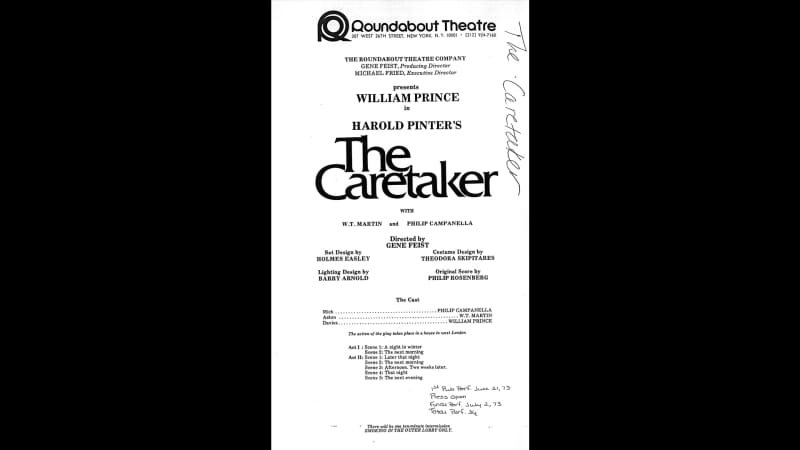
The playbill from Roundabout’s 1973 production of THE CARETAKER.
A prop-centric play that Roundabout has staged three times is Harold Pinter’s The Caretaker. First staged in 1973 (Stage Two, 26th Street Theatre), it featured a set designed by Holmes Easley and costumes by Theodora Skipitares. Unfortunately, the properties supervisor was not listed in the program, but it seems likely that John Pascarella would have been involved as he is listed in the program as the one the set was “executed by”. Pinter’s stage directions provide a clear sense as to the volume of objects that should populate this play’s world:
A room. A window in the back wall, the bottom half covered by a sack. An iron bed along the left wall. Above it a small cupboard, paint buckets, boxes containing nuts, screws, etc. More boxes, vases, by the side of the bed. A door, U.R. To the right of the window, a mound: a kitchen sink, a stepladder, a coal bucket, a lawnmower, a shopping trolley, boxes, sideboard drawers. Under this mound an iron bed. In front of it a gas stove. On the gas stove a statue of Buddha. D.R., a fireplace. Around it a couple of suitcases, a rolled carpet, a blow-lamp, a wooden chair on its side, boxes, a number of ornaments, a clothes horse, a few short planks of wood, a small electric fire and a very old electric toaster. Below this a pile of old newspapers. Under Aston’s bed by the left wall, is an Electrolux, which is not seen til used. A bucket hangs from the ceiling.
The Caretaker, by Harold Pinter. Roundabout Theatre Production Script, Opening Scene, Pg 1.
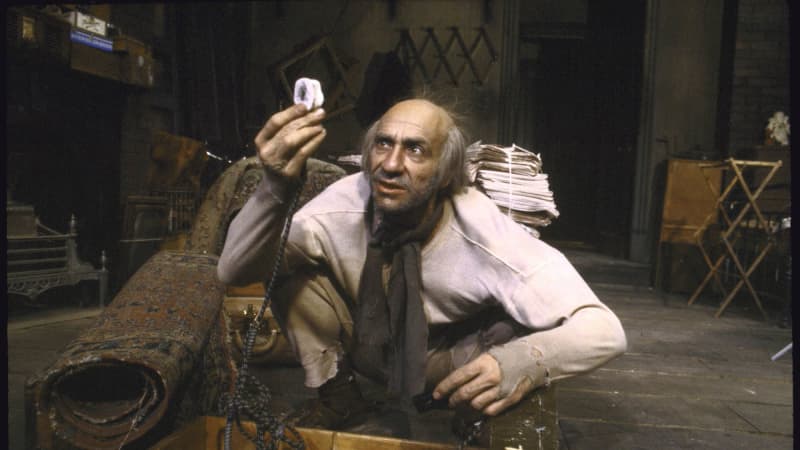
F. Murray Abraham in Roundabout’s 1982 production of THE CARETAKER.
Photo by Martha Swope.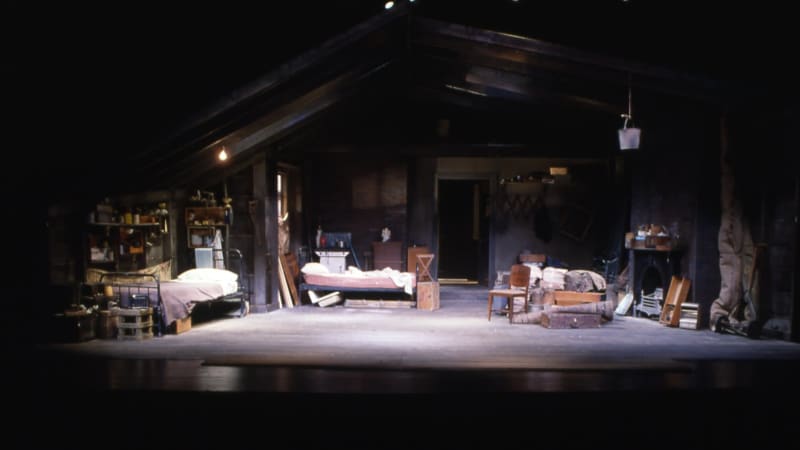
The set of Roundabout’s 1982 production of THE CARETAKER.
The play was staged a second time in 1982 (Stage One, 23rd Street Theatre) with set design by Roger Mooney, and starred F. Murray Abraham as Davies, Anthony Heald as Aston, and Daniel Gerroll as Mick. Props were coordinated by Mary O’Leary. Critic Charles Ryweck writing for The Hollywood Reporter (March 10, 1982) described the set as follows: “Roger Mooney’s cluttered set is filled with all sorts of discarded bric-a-brac.”

Patrick Stewart (L) and Kyle MacLachlan in Roundabout’s 2003 production of THE CARETAKER.
Photo by Joan Marcus.In 2003, the play was staged for a third time (American Airlines Theatre) and Roundabout’s Archives provide a visual entrance into this play. The production starred Patrick Stewart as Davies, Aidan Gillen as Mick, and Kyle MacLachlan as Aston. The set was designed by John Lee Beatty with Denise Grillo as Props Coordinator. The Upstage Guide for that production includes interviews with Beatty and costume designer Jane Greenwood, providing details of their inspiration for the production.
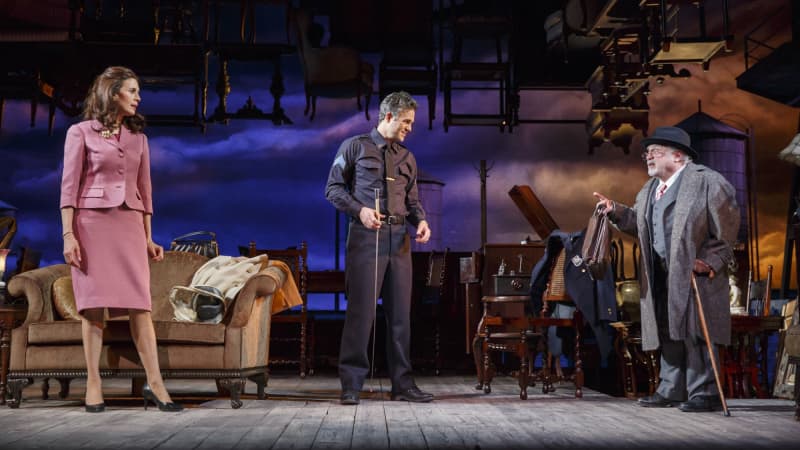
From left, Jessica Hecht, Mark Ruffalo, and Danny DeVito in Roundabout’s 2017 production of THE PRICE.
Photo by Joan Marcus.A more recent play, Arthur Miller’s The Price, has also been revived by Roundabout more than once and involves a prop-heavy set. The most recent staging, (American Airlines Theatre, 2017) starred Danny DeVito as the quirky furniture dealer Gregory Solomon, with set design by Derek McLane and Production Properties by Kate Lundell. Like The Caretaker, the author set the stage for the number and scope of props in the opening stage directions:
There are four couches and three settees strewn at random over the floor; armchairs, wingbacks, a divan, occasional chairs. On the floor and stacked against the three walls up to the ceiling are bureaus, armoires, a tall secretary, a breakfront, a long, elaborately carved serving table, end tables, a library table, desks, glass-front bookcases, bow-front glass cabinets, and so forth…
The Price, by Arthur Miller. Roundabout Production Script, Pgs 3-4.
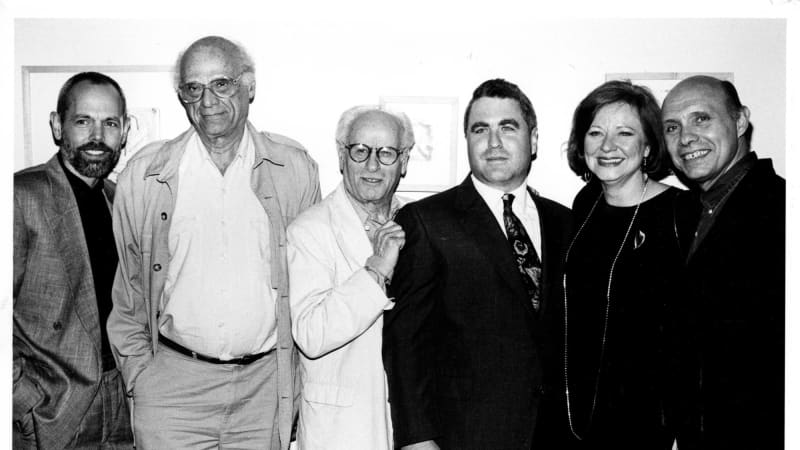
From left: Joe Spano, Arthur Miller, Eli Wallach, Todd Haimes, Debra Mooney, and Hector Elizondo at the opening night of Roundabout’s 1992 production of THE PRICE.
Photo by Shevett Studios.An earlier staging of the play (Criterion Center, 1992) was part of Roundabout’s first season on Broadway, with an equally crammed set. In that staging, Eli Wallach played Gregory Solomon, with coincidentally the same design team as The Caretaker in 2003: John Lee Beatty (set) and Jane Greenwood (costumes).
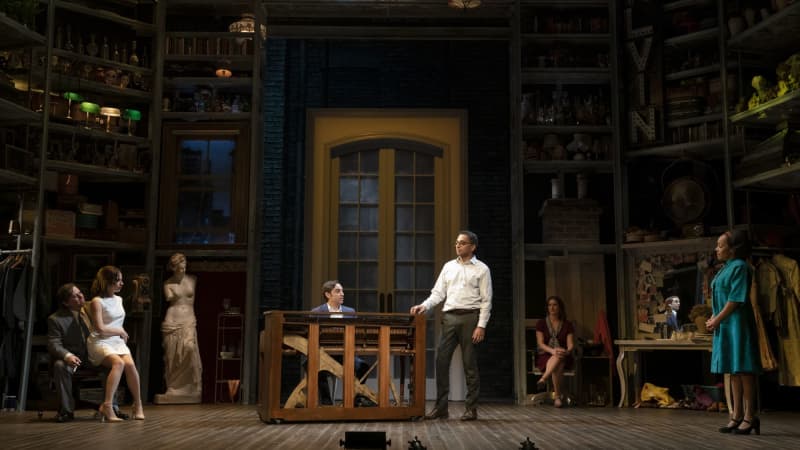
Roundabout’s 2019 production of MERRILY WE ROLL ALONG.
Photo by Joan Marcus.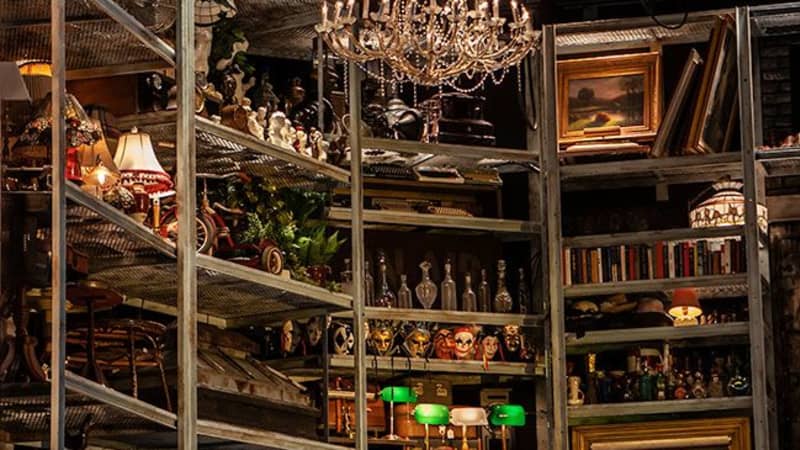
A close up of the shelves on the set of Roundabout’s 2019 production of MERRILY WE ROLL ALONG.
And most recently, Stephen Sondheim and George Furth’s musical, Merrily We Roll Along (Laura Pels Theatre, 2019) featured a prop-centric design. From the floors to the rafters, the set was filled with all manner of props. Designed by Derek McLane with Properties Supervision by Samantha Shoffner, in Roundabout’s Upstage Guide McLane describes his approach to the design:
This is my fourth collaboration with Fiasco Theatre Company. Fiasco tells stories through the use of objects, manipulated by actors, so a big part of my job is to invent the “toy chest” out of which these objects come.
In the case of Merrily, the “toy chest” was comprised of hundreds of individual props meticulously placed on shelving surrounding the stage.
As celebrity organizer Marie Kondo advises, “keep only those things that speak to your heart.” For productions like those listed where so many objects are used with many having the potential to spark joy, retaining key props for permanent safekeeping in the Archives is a difficult task. What do you select? Which objects spark joy? I leave you with one that certainly “sparks”: one of the “Blobs” featured in the musical number “The Blob” in Merrily We Roll Along.
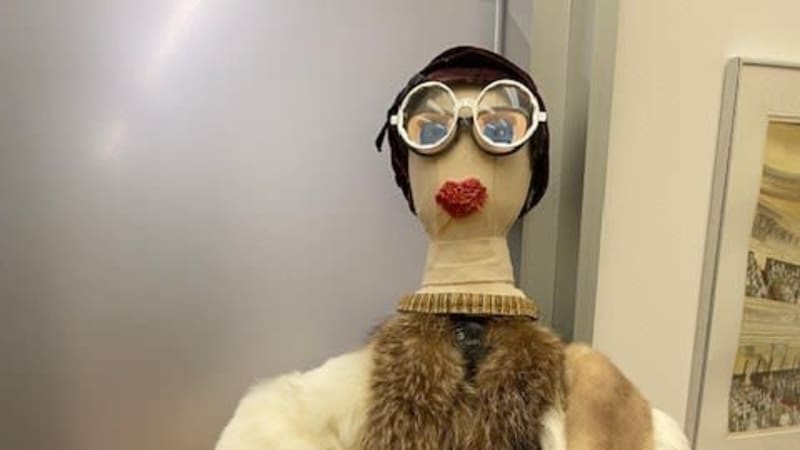
The “fur lady blob” from Roundabout’s 2019 production of MERRILY WE ROLL ALONG.


